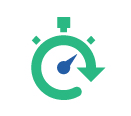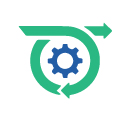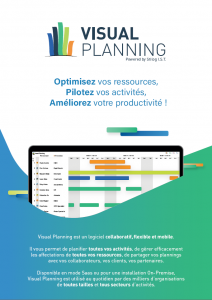Managing field service operations can be a pretty challenging task because so many factors are involved. Not only do you have to manage workers in the field, coordinate schedules, keep track of equipment, and respond to emergencies, you also have to keep customers happy with fast and effective service.
Streamlining your services not only can make operations more efficient. But it can also increase your profitability. Here are some ways you can make your field service more effective and less hectic.

1. FOCUS ON BETTER RESPONSE TIME
Let’s face it: no one likes to wait for service. In a world where technology makes almost everything instantaneous, customers expect service providers to respond to their needs quickly. Most field-service businesses are making response time a priority.
But emphasizing fast response is one thing, implementing it is another. Technology can help. Scheduling service software helps managers assign and dispatch workers based on their location, availability, and skill set. It can provide real-time status updates, so you know when a worker finishes a job and can take a new assignment.

2. COLLECT AND ANALYZE DATA
Technology makes a ton a data available to organizations today, but organizing and making sense of it can be a challenge. While not all data needs to be analyzed, there are some key collection points that can improve your field service.
Data on driver behavior, speed of service, delivery logs, time spent on each site, and routing records can be used to improve scheduling efficiency. When managers monitor and analyze such data, they can identify patterns in services such as which technicians operate the fastest, who completes the most assignments, average travel time to job sites, and the fastest travel routes.
By identifying these patterns, you can adjust scheduling for more efficient service. Likewise, keeping track of vehicle use data can help with maintaining your fleet.

3. INCREASE COMMUNICATION AND COLLABORATION
The use of mobile devices in the field has significantly improved communication in field service. But beyond phone calls, texts, and emails, workers in the field have access to files and data through cloud-based software. It helps them improve service delivery.
Better communication also helps with collaboration, as workers can easily reach out to the office for assistance or contact a fellow worker who can help troubleshoot an issue without being on location.
Collaboration tools also reduce the need to have more than one technician on site to solve an issue. Through cloud storage, workers can access previous service history, vital documents, or digital guides to perform tasks better.

4. GIVE THE SALES TEAM A VIEW OF FIELD OPERATIONS
While your sales team interacts with customers over the phone or online, they don’t communicate with them face-to-face. No matter how experienced or skilled they are at their jobs, they can’t get a full understanding of customer needs because they aren’t in the field.
Take advantage of your field team who deals with customers face-to-face every day. Train field workers to ask the right questions. Identify gaps in products and services. Create a line of communication between them and the sales team to take advantage of this information. It also helps when technicians have some sales training as they can upsell customers with additional products and services or renew contracts onsite.

5. OPTIMIZE WORKFLOW
Field managers and dispatchers have a tough task of coordinating the workflow of service operations. But using technology to monitor the availability of all resources—people, equipment, and vehicles—makes it easier.
Using a scheduling solution helps managers optimize routing, improve delivery times, and gives them visibility into field operations. Some tools even let dispatchers monitor traffic so they know which technician can get to the site fastest and give them the best route to take. This not only improves service response times but can also reduce miles traveled to save costs on gas.

6. IDENTIFY PATTERNS FOR FORECASTING
When it comes to forecasting service demand, some factors are out of your control, such as weather events or power outages. But there are some regular seasonal patterns managers can evaluate to better forecast service needs so they don’t get caught in a bind with last-minute scheduling changes.
Managers should perform resource capacity planning and track data such as jobs fulfilled, jobs lost, first-visit job completions, and then determine average jobs per day. Compare this data from month to month to realize any seasonal patterns or service spikes and prepare schedules accordingly.
Managers should also take into account things such as sales promotions or community events that can impact the number of service assignments. Good scheduling software can make the forecasting process simple through automated forecasting.

7. SCHEDULE PREVENTATIVE MAINTENANCE
While much of field service operations involves responding to problems customers encounter, businesses can improve service, profitability, and scheduling issues with regular preventative maintenance. When a customer calls with an emergency, a manager will have to find the nearest available field worker to handle the job, which can throw off the schedule. But preventative maintenance eliminates the frequency of emergencies and keeps you in control of the schedule.
It also adds value to the customer experience by providing an ongoing relationship and reducing worries about equipment failure. Optimizing your service operations can go a long way in improving customer satisfaction, saving time, and eliminating scheduling headaches. The right scheduling platform can give you visibility into operations. it can improve the efficiency and quality of your services. If you’re looking to get started with a field service management solution, Visual Planning can help you allocate your teams. The software can also plan interventions, and track customer needs simply and seamlessly.



